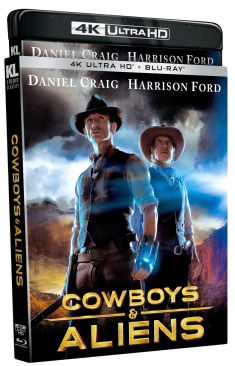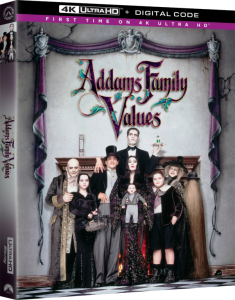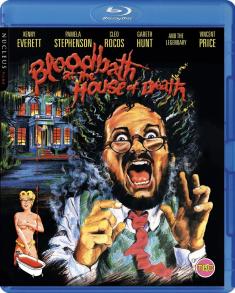VIZIO SmartCast P-Series Ultra HD HDR Home Theater Display
Overview -PROS
-Dolby Vision stuns (& HDR10 coming soon)
-Exceptional black levels
-Good factory calibration
-SmartCast / GoogleCast work well (every smartphone & tablet becomes a remote)
-Easy to professionally calibrate
-Solid upscaling
-Strong Value
CONS
-HDMI ARC bugs
-Quirky Apps
-No Amazon Instant Video Support
-Problematic volume adjusting
-Panel uniformity
-Slow startup
-No 3D
INTRO
2016 stands as a dividing line in the realm of never-ending display evolution. While Ultra HD has existed for the last few product cycles, individual models may or may not have included the necessary features to display next generation content. Fortunately, things have settled, as much as they ever do, and the standards are clearer. In summary, to fully experience all forms of Ultra High Definition, you need an HDR-capable display with a 10-bit panel with 3840 x 2160 resolution that accepts the HEVC codec via streaming and an HDMI 2.0a / HDCP 2.2 signal chain for external devices like Ultra HD Blu-ray players.
There are two sticking points to this formula, however: 1) HDR and 10-bit panels are often mid-to-flagship level features, and 2) we currently have two competing HDR technologies -- Dolby Vision and HDR10. To be clear, High Dynamic Range is UHD's standout feature, producing imagery in the home that trumps all but a handful of commercial cinemas. Deeper blacks. More detailed whites. And more accurate and richer colors (yes, wider color gamut is separate, but also directly benefits from HDR).
Dolby Vision launched first in cinemas (it's also a projection system), is currently available on UHD streaming services like Netflix, VUDU, and Amazon, and will be baked into some upcoming Ultra HD Blu-rays. HDR10 is written into the Ultra HD Blu-ray specification (if a UHD Blu-ray has HDR content, it must at least have HDR10) and is also supported by streaming platforms like Amazon, Netflix, and MGO. Also, the newly announced Xbox One S will feature HDR10 gaming.
VIZIO, LG, and Philips all offer dual-HDR models for 2016, while Sony, Samsung, Panasonic, Epson, JVC, and Sharp products lean HDR10-only. All of these companies make quality displays, and while it's necessary to have HDR10, it's a best of both worlds scenario to opt for a high quality dual-format support.
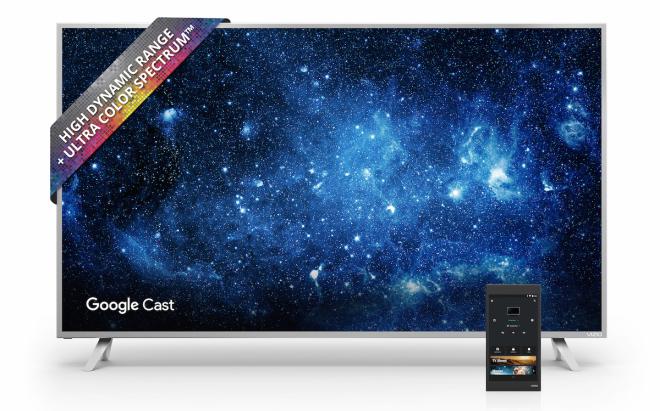
MEET THE VIZIO P-SERIES
VIZIO is probably best known for budget-friendly TVs, but in recent years pivoted towards flagship performance features at affordable prices. First, they offered 4K and Full Array Local Dimming (FALD), which allows LCDs to have deeper black levels, less blooming, and less light bleed. And now we have HDR. The P-Series takes what VIZIO learned in making their Reference Series -- the first Dolby Vision display -- and trickles the tech down into a display that costs one-third as much (for the 65" model) and has 90% of the performance.
Oh, and in the process, VIZIO reimagined what it means to own a Smart TV.
Four P-Series models are available -- 50", 55", 65", and 75" -- and all offer Dolby Vision out of the box while reproducing about 95% of the wider DCI P3 cinema color space. HDR10 will be included soon, but as I write this, we're still waiting for a firmware update. The 50", 65", and 75" models are VA panels, offering deeper black levels while losing color saturation at wider viewing angles. The 55" model features an IPS panel, which trades black level performance for more consistent colors at all viewing angles. The 50" and 55" models boast 126 FALD Zones, while the 65" and 75" models offer 128. The entire series is capable of outputting 600 nits of peak brightness across the entire screen (a fully white screen).
If you're concerned about the lack of Ultra HD Premium certification, don't be. The P-Series is plenty bright, and VIZIO has some "serious problems" with the way the UHDA implemented its certification process. "Specifically, the certification’s 1000 Nit peak brightness spec does not address any limitations of blooming of haloing artifacts, which can dramatically affect dynamic range (contrast) and overall picture quality. The testing requirement only measures the center brightness point of a test pattern and does not measure how the surrounding black level is affected. To maximize contrast, the peak brightness should be measured at the same time, with the same pattern as black level, as is done with ANSI contrast measurements."
Lastly it's important to note that the P-Series is not technically a television because it lacks an integrated digital tuner. Instead, VIZIO has dubbed it a Home Theatre Display. Given the prevelance of DVRs and other set-top boxes, this isn't as big a deal as it may seem. Plus, you can always buy an external digital tuner. Other notable futures include Clear Action 960 with a 240Hz Effective Refresh Rate (for smoother motion), Pure Cinema Engine (for 24p content), High Velocity Mode (120fps over HDMI for gaming), the VM50 Ultra HD Engine (for upscaling content), and built-in WiFi / a wired LAN port.
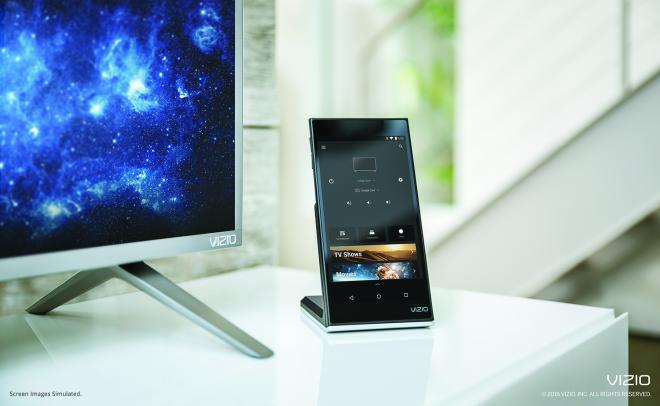
GOODBYE GUI, HELLO SMARTCAST
The P-Series is the first VIZIO display to drop an internal operating system, or GUI (graphics user interface). Meaning, there is no extensive menu, nor any built-in apps for streaming audio and video content like most 2016 displays.
Instead, the VIZIO P-Series is the tip of the spear (edge of the knife) of VIZIO's new SmartCast ecosystem, which utilizes Google Cast -- fka Chromecast -- to control video and audio content on a myriad of devices. Unlike Apple Airplay, Google Cast doesn't stream content FROM smartphones and tablets TO the P-Series, but instead uses your smartphone or tablets to control WHAT the P-Series streams (the display's V8 Octa-Core Processor handles processing and decoding). And it's already built into tons of apps available for Android and iOS devices.
It's a pretty seamless experience, overall, and effectively makes every smartphone and tablet a P-Series remote. If you don't already own one, VIZIO includes a brand new 6" Android Tablet Remote with each P-Series (there is also an IR remote, but it can't control any streaming apps). This tablet comes with the VIZIO SmartCast app pre-installed and features Full 1080p HD resolution, Android Lollipop, a V8 octa-core processor, stereo speakers, and 16GB of storage. To be clear, this is a normal Android tablet (not locked to the P-Series) where you can stream content or surf the web and check email independently of whatever you're streaming on the P-Series.

SET-UP & DESIGN
For this review, VIZIO loaned me a 65" P65-C1 Ultra HD HDR Home Theater Display. It weighs 61.4 lbs (62.39 lbs with the stands), measures 57.44”W x 32.99”H x 2.54”D (57.44”W x 35.39”H x 11.26”D with the stands), and requires a 50" wide entertainment platform on which to stand or a 400 x 400 VESA wall mount.
P-Series design is functional, offering a brushed aluminum bezel around the panel which is attractive, but I wonder if it will feel dated soon. As we might expect, it doesn't quite have the fit and finish of the gorgeous Reference Series. Around back, you'll find 5 HDMI inputs (4 HDMI 2.0a, 1 HDMI 1.4), analog and digital audio outs, and USB ports.
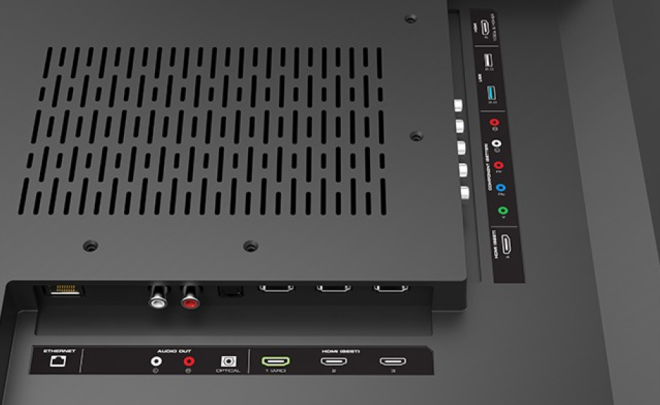
I already had a wall mount in place and was quickly able to swap in the P-Series. If you have a flush mount as I do, I found the P-Series' backside was curved in such a way that it made it impossible to fully lock the display into place. This won't be an issue with every wall mount, of course, but buyer beware.
After connecting the P65-C1 to a Denon AVR-X6200W AV Receiver via the P65's ARC-capable HDMI 1 input, the guided set-up process was simple and fast. It's actually one of the P-Series strongest features; anyone can set it up. Select your a language, aspect ratio, connect to your home's internet network (wireless or wired), and pair both remote controls.
To Cast content, simply connect any compatible app to your P-Series by tapping the Google Cast icon. That's it. For all other content, use HDMI. With a multitude of factory and custom calibration options, I first left the display to (mostly) factory settings -- Calibrated (for daytime) and Calibrated Dark (for evenings), Normal color temperature, zero Sharpness, and all motion enhancements off -- before dialing in a Rec 709 calibration.
Like most 2016 HDR displays, the P-Series has a completely separate mode for HDR, which activates when the display detects Dolby Vision content (HDR10 coming soon). Meaning, if you do a Rec 709 calibration, it doesn't touch the Dolby Vision settings. It also means you have to set your base calibration at least twice. I left Dolby Vision in Calibrated Dark because I didn't have the tools to calibrate for HDR. FYI, CalMan can do Dolby Vision calibration, but I was unable to arrange loaner equipment for this review. I hope to get the necessary gear later this year.
With a breezy set-up and above average out-of-the-box settings, especially Dolby Vision material, the P-Series impresses on day one.
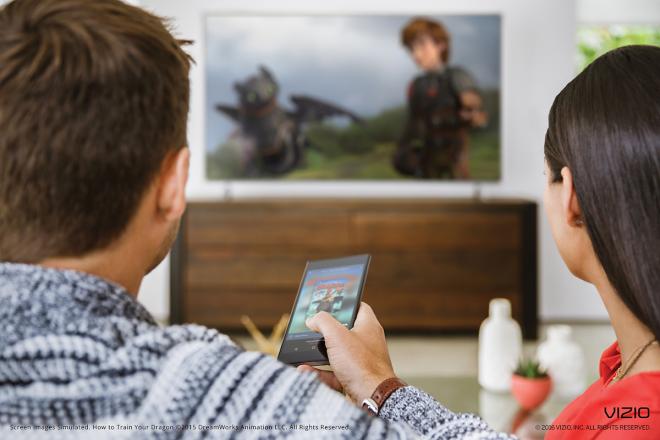
USABILITY: LIVING WITH THE P-SERIES
The P-Series is a wholly different beast from any TV I've ever owned. Cord-cutters and heavy streamers are going to love it. It's the ultimate convenience, at the press of a button, to have your whole system turn on (requires HDMI ARC) and all your content ready to stream.
The supplied tablet is easy to navigate and, unlike using my iPhone 6S Plus, retains the ability to adjust volume even when the tablet screen is dark (locked). Sadly though, volume adjustments are quite buggy. Sometimes it bumps up (or down) half a decibel; sometimes five to seven (!!!), which is jarring and annoying.
I ultimately switched to my iPhone 6S Plus because its touch-sensor Home button makes for quicker access to SmartCast and other apps. Preferences will vary by owner, but the takeaway here is: once you find your groove, SmartCast effectively lays waste to anyone suffering with multiple remotes, or anyone tiring from physical media hassles (looking at you, un-skippable FBI Piracy Warning).
On the flip side, while there's massive support for Google Cast, it's not universal. Amazon Instant Video is one example, which is a shame considering their support for 4K UHD with HDR10 and Dolby Vision. To watch Amazon, you'll need to keep your Roku or Blu-ray Player, but those do not yet include either HDR format.
Apps can be quirky at times too. VUDU sometimes refuses to stream UHD and drops to HDX quality (restarting the P-Series seems to fix this). HBO GO likes to turn on Closed Captioning whenever the Play button is tapped. And, every app managed to, at least once, disconnect from what was streaming -- meaning, the movie's playing, but you can no longer play/pause/rewind/etc.
Ultimately, shifting from internal to external apps is a smart choice, for VIZIO and consumers alike. VIZIO no longer has to update old apps for dozens of models. And we get faster updates directly from the HULUs and VUDUs of the world. That might not seem like a big deal, but have you attempted to stream Netflix on an older Blu-ray Player lately?

While the Casting experience is a home run -- I wish all content consumption was this easy -- there is an HDMI bug worth noting. HDMI ARC (and HDMI Control) is necessary to enjoy Dolby Atmos content and makes the SmartCast app a universal-esque remote. However, coupled with this convenience, the P-Series repeatedly "found and set up" my AVR, which causes a several-second audio-video dropout. Most of this review was conducted with Denon AVRs, but this problem persisted with a Pioneer SC-97 AVR and Yamaha YSP-5600 Dolby Atmos soundbar (reviews forthcoming). It's not really a deal-killer, but it's frequent and frustrating at times.
Also, for universal remote owners... I have the Logitech Harmony Elite in for review and it was often unable to switch the P-Series from Cast to HDMI. Per VIZIO, other reviewers have not experienced this issue, yet the Elite works fine with other displays and has the right VIZIO codes. What's wrong, I'm not certain (perhaps a timing issue?). Either way, if you experience anything similar, I found two workarounds: 1) add a delayed, secondary "switch HDMI input" code under activity settings, or 2) always shut down the P-Series in HDMI rather than Cast.
Lastly, the P-Series may stream content easily and quickly, but the display takes north of ten seconds to power up, making it the slowest display I've owned since rear projection.
Day-to-day life with the P-Series will vary depending on your needs. There are a couple bugs and quirks, HDMI ARC the most frustrating among them, but SmartCast streaming is a wonderful ecosystem and I miss it when stepping back to conventional televisions.
PERFORMANCE: DOLBY VISION FOREVER
Make no mistake, the P-Series produces a world-class picture capable of standing shoulder to shoulder with much pricier flagship model displays. It performs best with native-resolution and high bitrate HD content, but does an admirable job with lesser content too. In other words, the junk-in-junk-out rule applies, but P-Series video performance meets or exceeds expectations. Especially when showing off UHD HDR content.
VUDU, Netflix and Amazon currently support both 4K and Dolby Vision on select titles, with Netflix and Amazon each promising 150 hours of Dolby Vision content by year's end. And while I don't see Amazon coming to the P-Series any time soon, 150 hours on Netflix plus 33 (and counting) Warner Bros UHD movies on VUDU is a great start. By the way, VUDU UHD movies can be purchased individually OR redeemed after the purchase of a Warner Bros Ultra HD Blu-ray (Sony has a similar policy with its UHD BDs and streaming service). In that sense buying a Warner Bros UHD Blu-ray offers a way to experience both HDR10 and Dolby Vision.
During this review, I streamed or purchased 'Pacific Rim', 'The Great Gatsby', 'Live Die Repeat: Edge of Tomorrow', 'In The Heart of the Sea', 'Point Break', 'Mad Max Fury Road' and, on Netflix, 'Marco Polo'. Like anything, Dolby Vision is content-dependent. Some movies -- 'Point Break' and 'In The Heart of the Sea' and 'Live Die Repeat: Edge of Tomorrow' come to mind -- offer only minor-to-modest gains over their SDR counterparts. They look good, not amazing, though I'm impressed with the lack of compression artifacts while streaming UHD on Netflix and VUDU. And there are other bonuses; for example, 'Live Die Repeat' and 'Pacific Rim' come with a Dolby Atmos mixes not found on their current Blu-rays.
But when Dolby Vision is done right, it's a revelation.
'Pacific Rim' and 'The Great Gatsby' offer reference quality visuals that blow their (HD) Blu-rays out of the water in every single way. Hell, watching HDX resolution after UHD will depress your eyes. 'Pacfic Rim' drenches itself in inky blacks and pops with bright neons while VFX remain grounded and weighted. Look for the added details when Kaijus breathe fire or when the Jaegers shoot weaponry. It's honestly one of the prettiest things I've ever seen; I can't even imagine what will happen if Disney applies HDR to Pixar films. The future is here, folks, and it's gorgeous.
'Gatsby' too is a pure visual treat. Here the HDR makes the VFX work more obvious, yet since the effects were always surreal, it adds to the overall charm. Saturated color leap off the screen, as do added highlight details during the lavish fireworks-laden party sequences. Wow. Just... Wow. 'Mad Max Fury Road' looks terrific as well, but much like the UHD Blu-ray, certain CGI elements (flames and explosions) look more cartoony.
Dolby Vision also demonstrates how precise the P-Series' FALD Zones are at pin-point bright areas within dark screens. In other words, my display suffered no blooming and drops to Plasma-quality black levels. Maybe even better. My panel also showed zero signs of corner or edge light bleeding. When the screen turns black, I honestly can't tell if it's still on. I am beyond impressed.
HD-resolution content from streaming apps, Blu-rays, and TV/cable/Satelite also look quite good thank to solid upscaling. Blu-rays are sharp and clear. I recently watched the 'Imagine Dragons: Smoke & Mirrors' concert Blu-ray and not only does it have a demo-worthy Dolby Atmos mix, but the black levels are exceptional. I was also surprised by how well the P-Series handled compressed TV. Channels like AMC and FX (and even HBO) are notorious for presenting amazing shows with a muddy, greyed-out picture, and compression artifacts. Again, the P-Series performed as well as (or better than) my VT-Series plasma, producing images with less artifacts and noise.
In terms of nitpicks, there are a few minor issues. The display tints slightly blue so dialing in, among other things, the 11-point grey scale during a Rec 709 calibration is recommended. And on lower resolution imagery, there is some blurring. For example, if actors tilt or shift their faces, a faint image trail follows. Also, while blooming wasn't an issue, the P-Series does seem to iris up and down when cutting between bright and dark scenes. Imagine a slow and visible transition akin to the way a video camera reacts when walking in or out doors.
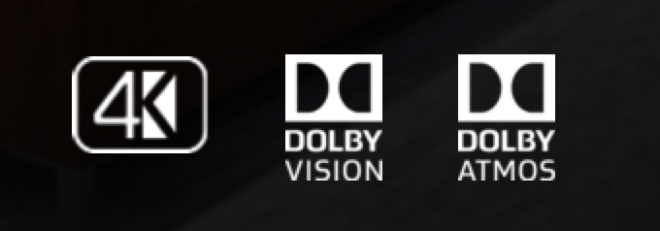
Lastly, as reported, some 65" and 75" P-Series display have suffered from panel uniformity issues. While the P-Series panels I've seen in a few Best Buys were flawless, my review unit does have a slender vertical yellow-greenish band directly at screen center. VIZIO has addressed the issue thusly: "There are reports of what some are calling “yellow banding” on certain 2016 VIZIO SmartCast P-Series 65" and 75” class home theater displays. It is common for panels to have minor variations in uniformity and color, but based on some consumer feedback, there may be some units that exhibit a wider variance. The variance appears to be noticeable only with certain limited content. If this is detracting from viewing experience/enjoyment, owners should contact VIZIO tech support at [email protected] or call 877.698.4946."
Thankfully, in my experience the band is only visible when content features lots of white (snowy mountains, etc.). It's there, for sure, but hidden most of the time. Also, is there even such a thing as a perfect display? I don't want to make excuses for VIZIO -- I hope they get this cleaned up -- but I'd be lying if I didn't say every single TV I've ever owned suffered from at least one panel uniformity issue. Some I exchanged (Sony rear projection). Some I learned to live with (Panasonic VT Series).
I also sampled a few Ultra HD Blu-rays during my review period, but without the HDR10 update, HDR content remaps itself down to standard dynamic range and results vary by title. Sometimes it matches the Blu-ray ('Independence Day') and sometimes it blows out the highlights and crushes the black levels ('Kingsman'). It'll be a grand day, very soon now, when this display becomes dual-HDR capable.
Overall, the VIZIO P-Series is a damned impressive display. A visual wonder with the best quality content that holds its own (#Hodor) with lesser material.
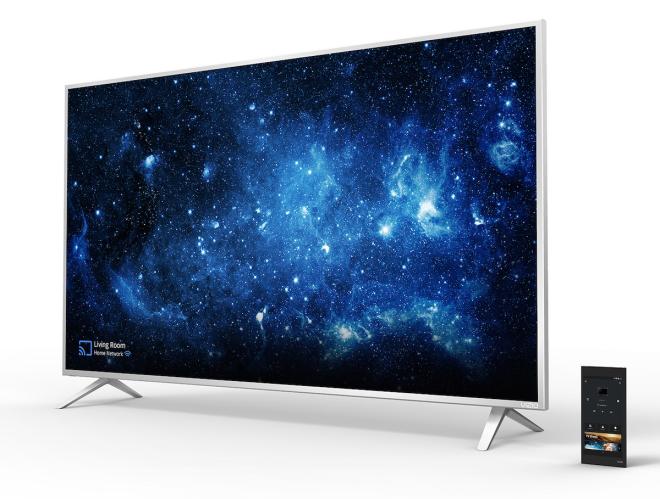
FINAL THOUGHTS
The 2016 VIZIO P-Series is a bold UHD display that delivers extraordinary out-of-the-box performance and value. A 65" true 10-bit panel with 128 FALD zones and support for Dolby Vision and (coming soon) HDR10 that MSRPs for less than $2,000? It's an unbeatable deal. Especially when streaming Dolby Vision and Dolby Atmos, it's akin to laser projection found in Dolby Cinema or IMAX Laser. Even less tech-savvy friends and family take notice. Blu-ray and other HD sources look terrific, especially after a Rec. 709 and 11-point grey scale calibrations. I've also come to love the SmartCast / Google Cast ecosystem because it gives you instant access to (almost) any content you want in seconds.
On the other hand, there's no 3D or Amazon Instant Video and there are a few bugs in need of firmware updates (the HDMI ARC "found and setup" dropouts are on the top of this list, followed by some quirky apps). So where does that leave us? Are a few first-gen bugs worth suffering for a display that delivers image quality that can compete with other company's flagship models (most of which do NOT include dual-HDR support) at half or one-third the price?
Honestly that depends on your needs.
If you're in the market for your first Ultra High Definition Display, enjoy the idea of a smartphone-remote, and don't mind a few bugs, the 2016 VIZIO P-Series should be the first stop on any demo experience. It's a beautiful display with a wonderful interface that's easier than most Smart TVs. For you, this display comes Recommended. (Fix the bugs, and I'd bump it up to 4.5 Stars / Highly Recommended.)
If the idea of a streaming-based interface isn't your thing, or you want to own a literal "TV", or if 3D is important, the P-Series would make a terrific secondary display. Outside of that, the next step for you would be to demo LG's 2016-model UH9500 Series Super UHD TVs.
P-SERIES PRICING & AVAILABILITY
The VIZIO SmartCast P-Series is currently available directly from VIZIO, Best Buy, and other authorized retailers. Each display ships with one 6" Android Tablet Remote and Wireless Charger, one IR remote control, and two Triple-A batteries. I haven't seen them on Amazon yet, but will add links to this review if that changes. MSRPs are as follows:
The 50" model (P50-C1) has a $999.99 MSRP.
The 55" model (P55-C1) has a $1,299.99 MSRP.
The 65" model (P65-C1) has a $1,999.99 MSRP.
The 75" model (P75-C1) has a $3,799.99 MSRP.












